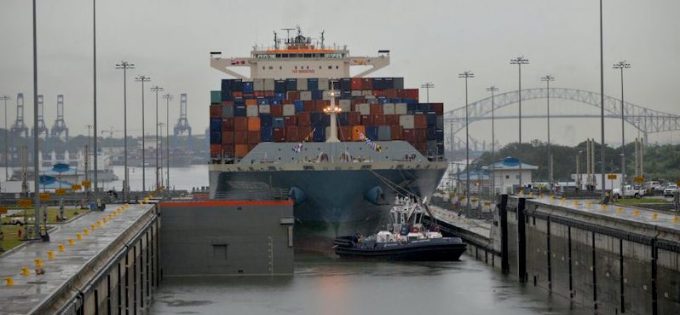Threat of rising oil price adds to frustration for crisis-hit supply chain chiefs
New warnings from the World Bank of surging oil prices, adding to the continuing instability ...

Containerships are proving less vulnerable to Panama Canal draught restrictions than other shipping sectors, but the resulting overall supply chain costs are expected to be significant.
Daily transit and weight restrictions have been imposed on ships transiting the canal since last March in a bid to preserve water levels after drops caused by higher temperatures, a delayed rainy season and the El Nino weather phenomenon.
On 1 January, the Panama Canal Authority (ACP) increased the number of transit slots up for auction to 24 a day, from 22. Before restrictions, there were around 34 to 38 daily transits.
Analysis from Drewry estimates that, while monthly data from the ACP shows the number of transits across all commercial shipping sectors is declining, containerships are growing their share of the slots.
It said: “Containerships are finding it easier to reserve slots, as some other sectors, most obviously dry bulk, continue to vacate the route…The situation is obviously very fluid and further draught restrictions could be announced at any time, but it seems that for containerships at least, the Panama Canal bottleneck is proving much less restrictive than it might otherwise have been.”
However, Drewry also noted that major challenges remained. Overall, containerships saw daily transits fall to an average of 7.4 in both November and December, down from 8.4 in October.
ACP also announced that from 1 January, “the base or initial amount of the auctions in the Neopanamax Locks has been adjusted to $100,000 for all auctions, and $110,000 for auctions held for a slot on a day of high demand, currently Friday.”
Consultancy McKinsey said in an research note that this was expected to result in across-the-board cost increases, regardless of how affected parties react, adding: “Costs like these are often passed through to customers – eventually making their way to final consumers.”
It predicted there would be 3,964 fewer transits than usual through the canal this year, leading to 1,954 extra transits around the Cape of Good Hope and 998 more through the Strait of Magellan, which are expected to slow journeys by around 20% and could increase the overall costs of the maritime trade currently moving through the Panama Canal by about 5%, estimated at $1.1bn.
Container carriers could also respond to the canal restrictions by switching to larger ships. This would cause transits via Suez to become a more viable option, although the uncertain conditions in the Red Sea region could restrict Suez transits.
McKinsey warned: “The combined impact of simultaneous slowdowns at these two major canals could be significant.”
Comment on this article